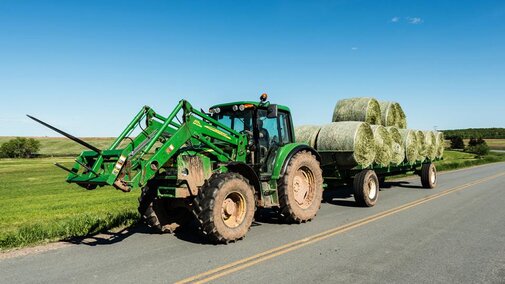Thin Alfalfa Stands Fall Options
Forage producers usually want alfalfa fields to produce for at least four or five years after seeding before being converted to another crop. So, what should producers do when their alfalfa stands fall below 10 plants per square foot, or heavy weed populations emerge, or the annual forage yields drop off below half?
For thin alfalfa stands, the temptation may be to drill or broadcast more alfalfa seeds to fill open spaces between plants. However, this practice is NOT recommended, since live alfalfa roots emit an ethylene chemical toxin into soil impeding growth of new alfalfa. This allelopathy effect also called “autotoxicity” weakens or kills any new emerging alfalfa. Autotoxicity also accumulates more in soil over time; meaning older alfalfa stands have increased toxin levels compared to newer stands. Therefore, it would be better to find a new replacement alfalfa field than seed into an existing thin stand.
The next decision for thin fields might be to delay mowing of the alfalfa to increase harvest tonnage. Once it has been decided to convert a thin alfalfa field to another crop, potential winter injury on plants lacking six or eight inches of recommended regrowth is no longer a concern.
For retained thin stands, an updated weed control plan may be needed following herbicide label carryover rotation restrictions. Finally, consider interseeding with perennial grasses such as brome, fescue, orchard grass or native grasses to increase forage production for the next growing season.
The bottom line is: Wait four weeks to over a year after established plants have been killed before drilling new alfalfa seed into previous alfalfa field. Further, when converting a thin alfalfa field into an alternative “cash crop” like corn or grain sorghum, opportunity arises for fall or winter alfalfa graze-out of thin alfalfa fields.
Storage Methods to Reduce Hay Losses
Hay is a valuable commodity this year. So, as you bring in your round bales for winter storage and feeding, store them to minimize weather losses.
Hay stored outside will be damaged by rain, snow, wind and ice this fall and winter. The average round bale may lose up to one-fourth of its original nutrients during storage, but these losses can be reduced to less than 10% or so.
For instance, do you usually line up bales for easy access so the twine sides touch each other? Or do you stack your bales? If so, extra spoilage will occur where these bales touch because rain, snow and ice will gather in spots where bales touch instead of running off. Research has shown that round bales stacked in a pyramid form will have greater dry matter losses compared bales butted end-to-end, cigar-like.
Does snow drift around your bales? Bales placed in east-west rows often have drifts on the south side. Hay next to fencelines or trees can get extra snow. As snow melts, it soaks into bales or makes the ground muddy. Plus, the north side never gets any sun so it's slow to dry. This year, line your bales up north-and-south for fewer drifts and faster drying as sunlight and prevailing winds hit both sides of the row.
Most important is the bottom of your bales. Always put bales on higher, well-drained ground so water drains away from them. Keep them out of terrace bottoms or other low spots. If necessary, use crushed rock, railroad ties or even pallets to elevate bales to keep the bottoms dry. This also will reduce problems getting to your hay or getting it moved due to snow drifts or mud.
So, for outside storage, a single row of bales end to end — along with consideration for row orientation and the ground surface drainage — will be the best storage method.
Late Summer Pasture Weeds
Late summer always seems like a time when weeds can become quite noticeable in pastures. Are you prepared to handle this late-summer nuisance?
Perennial weeds like western ragweed, ironweed and verbena, as well as annual weeds like horseweed, sunflowers, snow-on-the-mountain and buffalo bur can be plentiful in some pastures. In areas of pastures that have relatively thin grass stands, where animals congregate or if overgrazing has occurred, weeds can be very visible.
Spraying weeds now does little good. Many weeds are too large to kill with herbicide. On both annual and perennial species that produce seed, herbicides might only reduce some seed production. If the goal is to improve appearance, shredding areas that have an abundance of weeds might actually be the best option, and may reduce some seed production too, if it’s not already too late.
Two other approaches are better for long-term weed control. First, focus on the grazing management of your pastures. This includes using the proper stocking rate and developing a good rotational grazing plan. An important objective is to increase the health, vigor and density of your grass. Healthy, competitive grass stands are essential to reduce weed populations economically over time.
Second, target herbicide applications for when they will do the most good. Both perennial and annual species can be better targeted with a spring application when plants are smaller and able to be controlled. For perennials, if a second application is needed, waiting closer to a killing frost is best. This provides the double whammy of stressing the plant heading into winter and allows more product to be translocated down to the shoots and roots as nutrients are pulled down for winter storage. Proper identification of your problem weeds is crucial when making these application timing decisions.
Pasture weeds may look unsightly now, but hold off on spraying. Improve grazing management and time herbicides for the best window of control so herbicides won’t be needed as often in the future.

